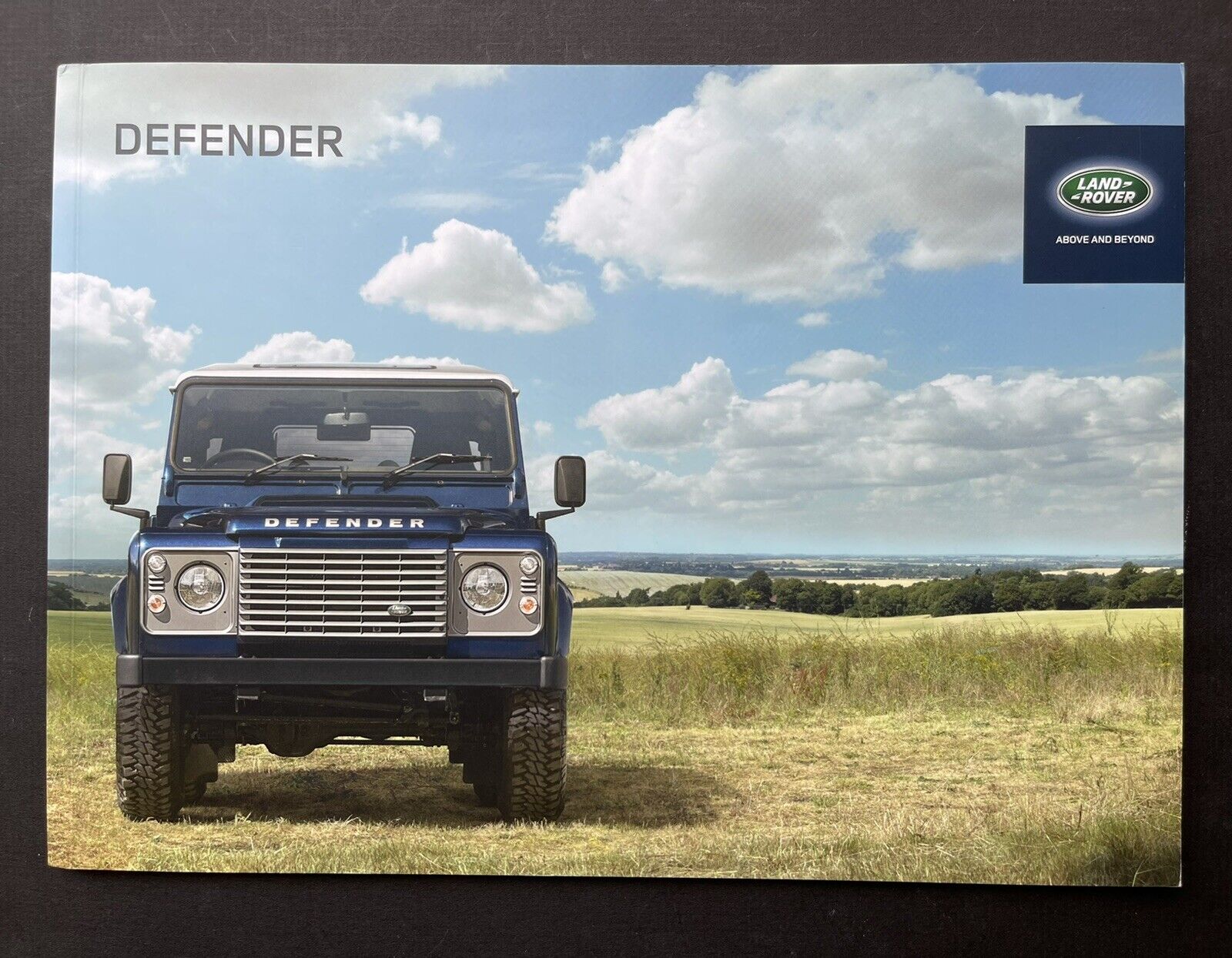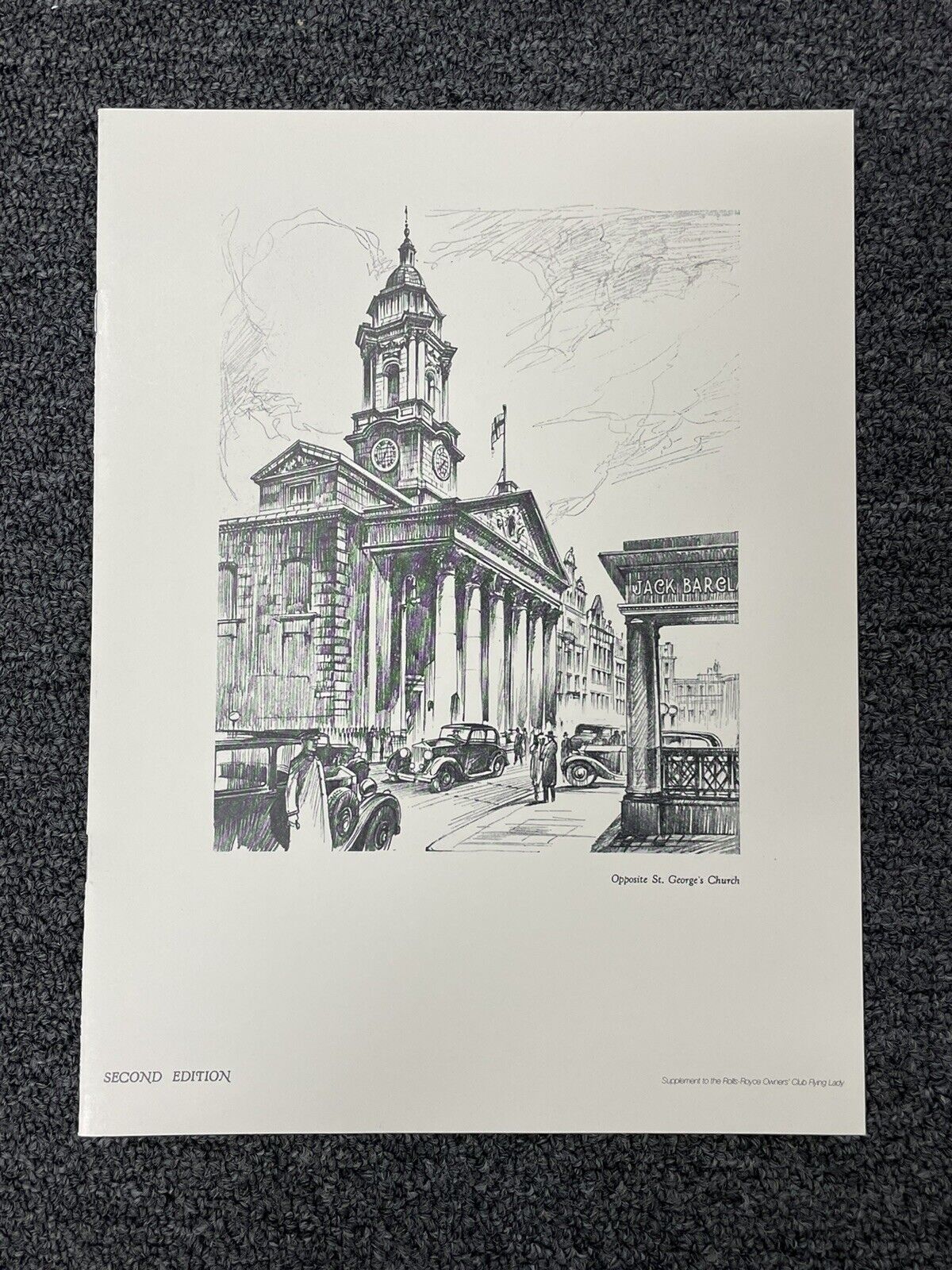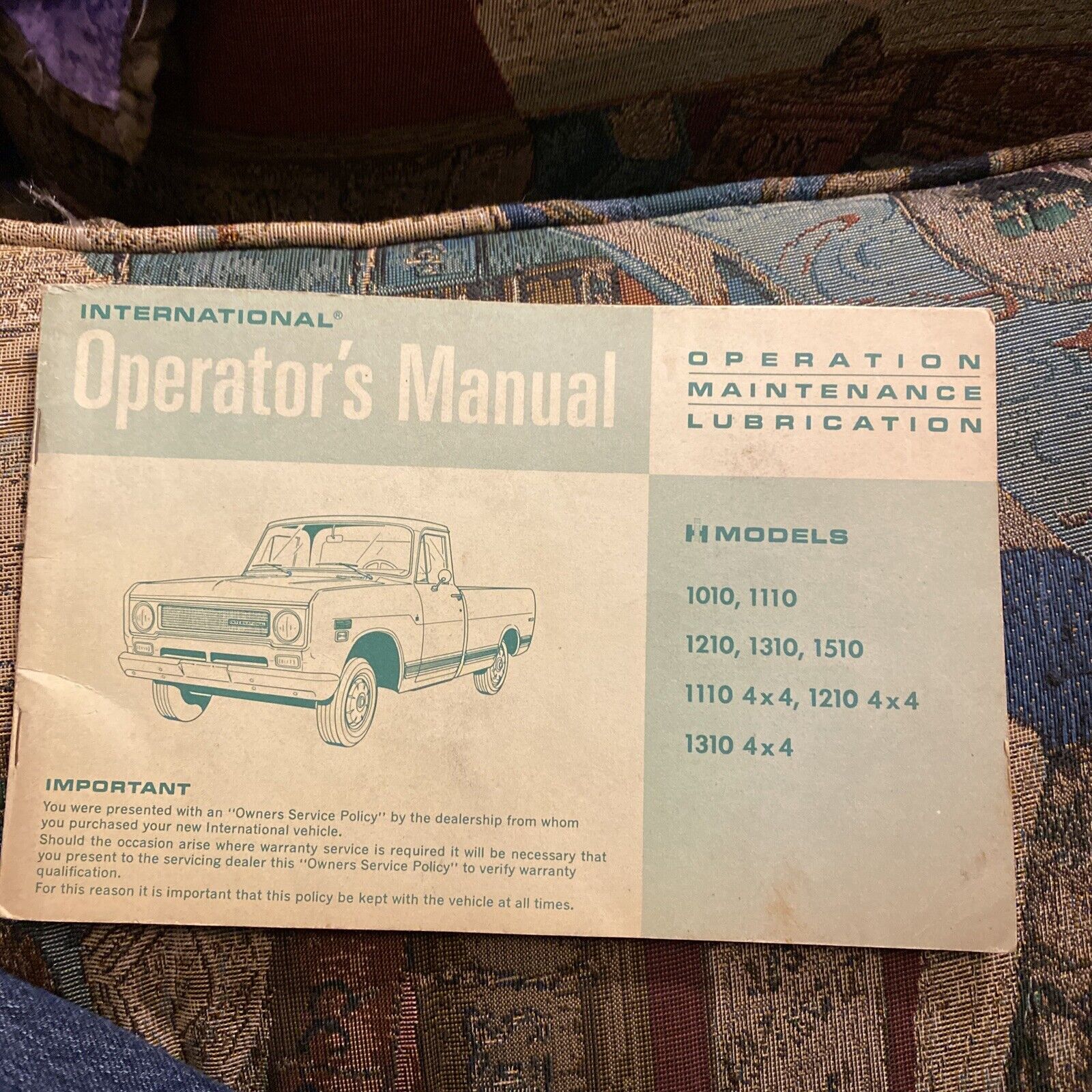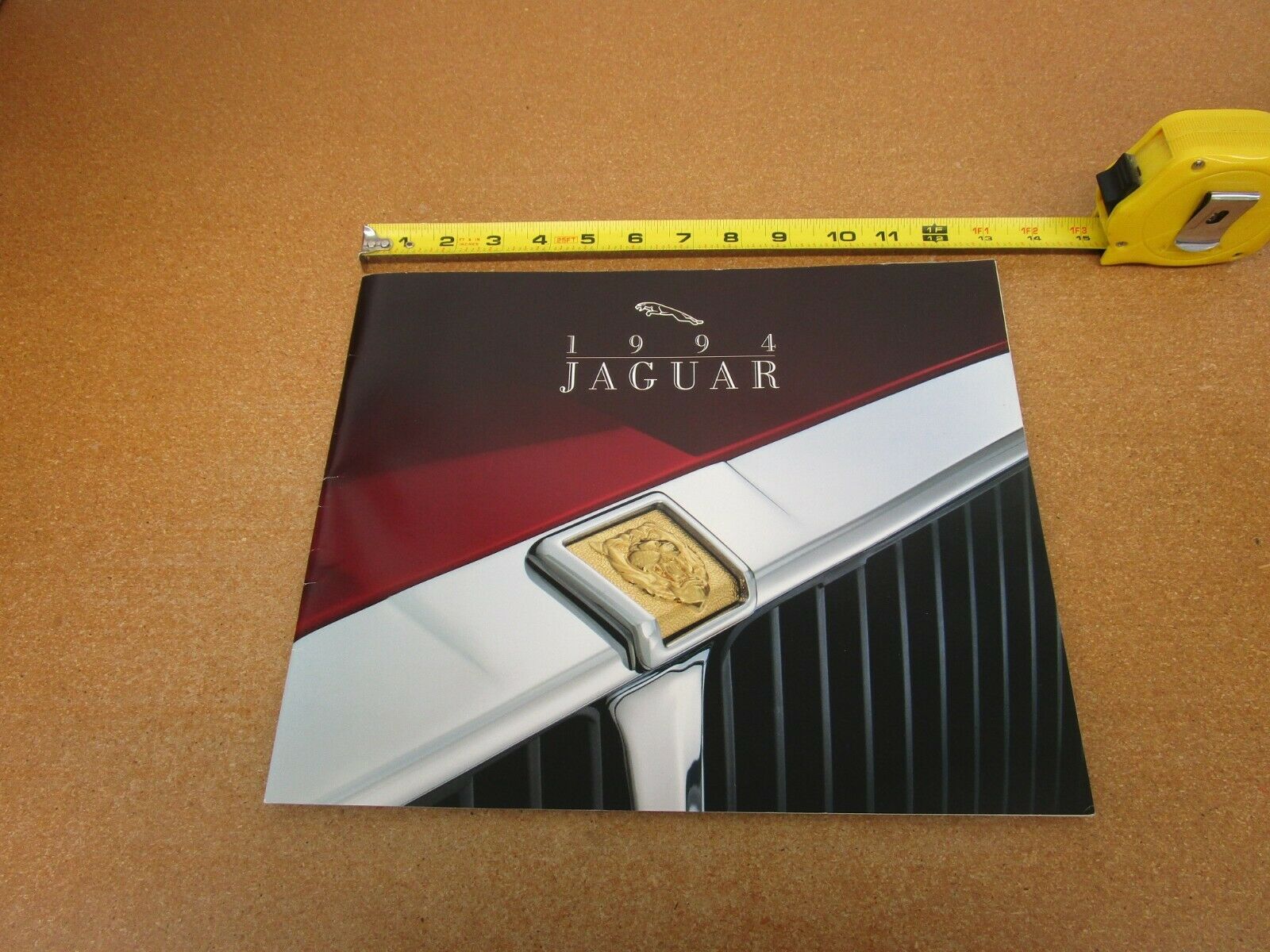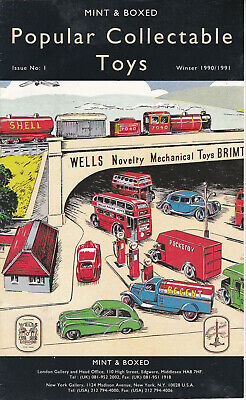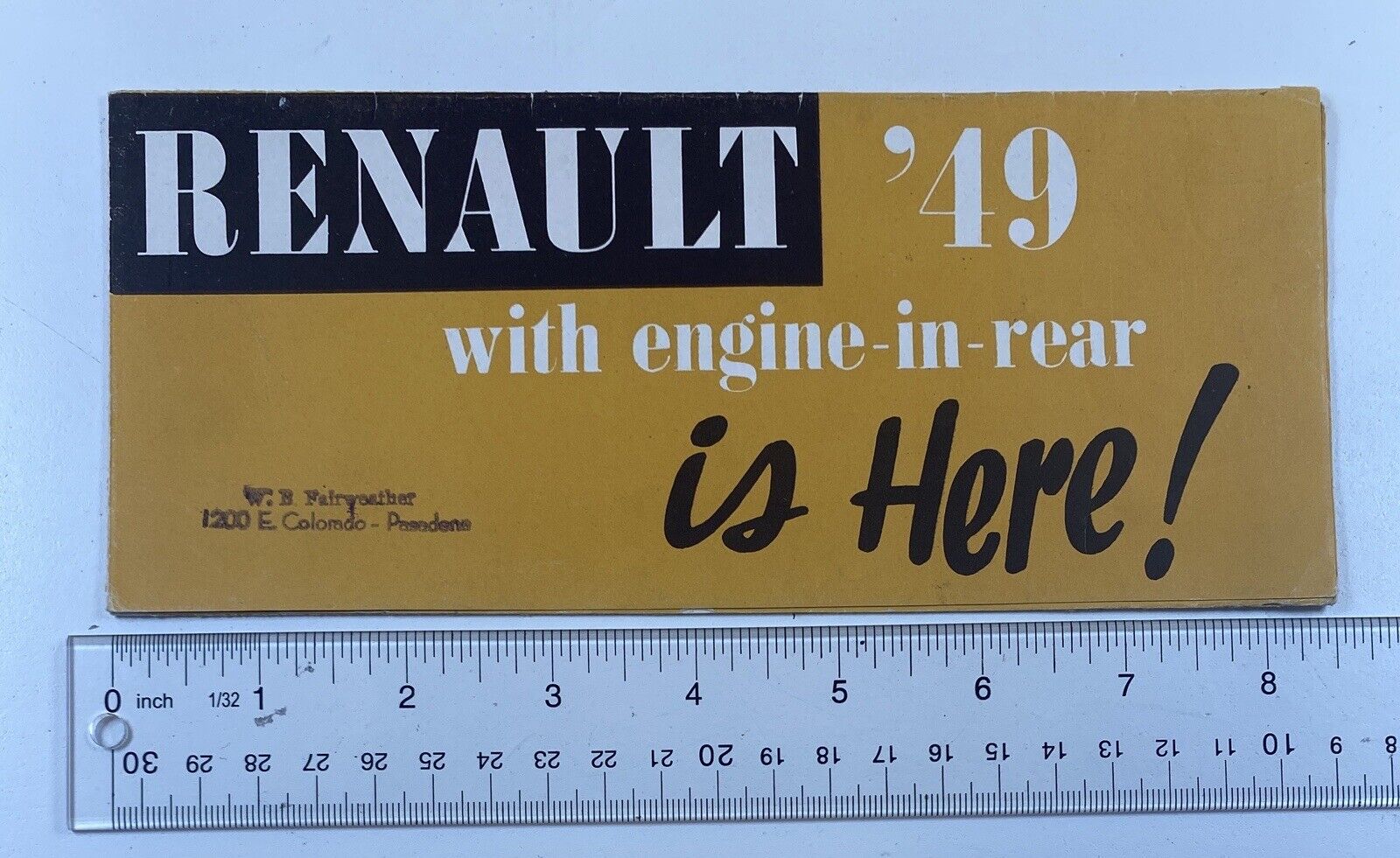-40%
c1954 “THE BRILLIANT NEW VAUXHALLS” WYVERN VELOX CRESTA V COOL UK AUTO BROCHURE
$ 5.27
- Description
- Size Guide
Description
Up for auction is a great old mid-20th-century British booklet, all about "The Brilliant New Vauxhalls / WYVERN VELOX CRESTA" as it reads at the bottom of the front cover.The single-stapled oblong booklet, richly illustrated in color with both photographs and illustrations, measures 8 inches wide by 3-1/4 inches high and comprises twelve (12) pages, counting the wrapper.
The inside front cover has this printed on it:
THREE BRILLIANT NEW VAUXHALLS
New styling...New colour schemes...New de-luxe interiors...New value
The new Vauxhalls are lovelier to look at; more delightful to drive; better than ever in performance, comfort and value.
Judge for yourself the new styling, inside and out, the new instrument panel, the new ventilating system, the radiant new colours. Make a special point of inspecting the CRESTA, the luxurious, superbly-appointed new-comer to the range.
All three Vauxhalls are spacious 5/6 seaters with big, sensibly-shaped luggage trunks. All have long-life "square" engines. All have new chrome-plated piston rings to reduce bore wear, new shock-proof steering, flashing direction indicators and many other new features. All have that outstanding flexibility and economy which denote Vauxhall engineering leadership.
WYVERN VELOX CRESTA
The following pages, all of which are illustrated, have information on the three models, and some of the headings printed are:
The 4-Cylinder Wyvern, outstanding economy with unusually good performance:
Exceptional Motoring Value: More Power from Less Petrol, Higher Compression Ratio, An All-round Success
The 6-Cylinder Velox, outstanding performance with unusually good economy: Style, Performance, Comfort
The Sparkling Cresta, The new Vauxhall luxury model: Vauxhall Value in a True Luxury Car
The New Vauxhall Instrument Pane;
Vauxhall Engineering Leadership: Vauxhall "Square" Engines; Chromium-Plated Top Piston Rings; Integral Body-Chassis; Recirculating Ball Steering; Easy Gear Change
On the back cover, next to a photo of a Vauxhall driving at dusk, this is printed:
SPACIOUS COMFORT WITHIN HANDY DIMENSIONS
The new Vauxhalls have been styled to secure the maximum passenger and luggage space within handy overall dimensions --
plus
ready manoeuvrability.
Overall length: 14 ft. 4-1/2 in., width: 5 ft. 6-1/2 in.; height: 5 ft. 3-1/2 in.
Wheel
base: 8 ft. 7 in.
Turning circle: 38 ft.
Seat width: Front 56 in., rear 57 in.
Legroom: front (max.) 47 in., rear 47 in.
Luggage trunk capacity: 15 cu. ft.
In accordance with the Vauxhall policy of progressive improvement, the right is reserved to alter any details of price, specification or equipment without notice.
VAUXHALL MOTORS LIMITED, LUTON, ENGLAND.
Printed in England. Imprimé en Angleterre VX 1010
Here's some information on Vauxhall Motors, courtesy Wikipedia (it's the start of their entry for the carmaker):
Vauxhall Motors Limited
is a British car manufacturer based in Chalton, Bedfordshire, England. The company, along with the Vauxhall marque, a sister brand of Opel, has been owned by Stellantis since January 2021.
Vauxhall's vehicle lineup is identical to that of Opel with the Vauxhall brand being exclusively used in the UK, the Channel Islands and the Isle of Man. Vauxhall is one of the oldest established vehicle manufacturers and distribution companies in the United Kingdom.
Vauxhall sells passenger cars, electric and light commercial vehicles under the Vauxhall marque, and formerly sold vans, buses, and trucks under the Bedford Vehicles brand. Vauxhall has been the second-largest selling car brand in the UK for more than two decades.
Vauxhall was founded by Alexander Wilson in 1857 as a pump and marine engine manufacturer. It was bought in 1863 by Andrew Betts Brown, who began producing travelling cranes; he named the company Vauxhall Iron Works. It began manufacturing cars in 1903. It was acquired by American automaker General Motors (GM) in 1925. Bedford Vehicles was established as a subsidiary of Vauxhall in 1930 to manufacture commercial vehicles.
It was a luxury car brand until it was bought by General Motors who thereafter built mid-market offerings. From the time of the Great Depression Vauxhall became increasingly mass-market. Since 1980, Vauxhall products have been largely identical to those of Opel, and most models are principally engineered in Russelsheim am Main, Germany. During the early 1980s, the Vauxhall brand was withdrawn from sale in all countries apart from the UK. At various times during its history, Vauxhall has been active in motorsports, including rallying and the British Touring Car Championship. After 92 years under GM's ownership, Vauxhall was sold to Groupe PSA in 2017.
Vauxhall has major manufacturing facilities in Luton (commercial vehicles, IBC Vehicles) and Ellesmere Port, UK (passenger cars). The Luton plant employs around 900 staff and has a capacity for building around 100,000 units a year. The Ellesmere Port plant currently employs around 1,880 staff and has a theoretical (three-shift) capacity around 187,000 units a year. Vauxhall-branded vehicles are manufactured in Opel factories in Germany, Spain, and Poland as well as in the UK.
Significant former Vauxhall production cars include the Victor, Viva, Chevette, and Cavalier. The current car range includes the Astra (small family car), Corsa (supermini), Insignia (large family car), Crossland X (subcompact crossover SUV), Mokka (subcompact SUV), and Grandland X (compact SUV). Vauxhall sells high-performance versions of some of its models under the GSi sub-brand.
Also from the Wikipedia article, here's the information on Vauxhall production from 1945 to 1970, which includes the "Brilliant New Vauxhalls" covered in the brochure I'm selling:
Vauxhall was one of the first English car makers to switch from wartime to civilian production, mostly due to the ease with which Bedford trucks in production for military use could be redirected to the civilian market. The first post-war civilian trucks were made a few days before VJ Day in August 1945, with Vauxhall car production resuming in September. These initial models were essentially unchanged from the three-model range (H-, I-, and J-type unibody designs) that had been launched just before the outbreak of war in 1939. However, they were now renamed simply as the Vauxhall Ten, Twelve and Fourteen respectively, were each available in a single body and specification (four-door saloons to what had been the Deluxe trim level) to ease production and had minor internal and external trim differences to account for shortages or extra costs of various materials. Government regulations of the time meant that 75% of production had to be sent for export, so very few of these revived models reached buyers in the United Kingdom. Further rationalisation occurred in 1946 when the Twelve ceased to be a distinct model and now shared the body of the Ten but with the larger-capacity engine.
These models were superseded by 'new' cars in 1948. GM management had dictated that Luton should only utilise a single body design in order to maximise productivity and reduce supply costs. The British government had also revoked the RAC taxable horsepower system and replaced it with a flat charge per vehicle regardless of engine size. This meant that there was no longer such an imperative to offer similar models with different engine capacities to fit in the different bands of the old tax system. Therefore, the new 1948 L-Type Vauxhalls consisted of just a pair of models, both using the body structure, floorpan and many running gear parts of the H-type/Ten model. However Vauxhall's director of styling, David Jones, managed to fit brand new exterior panels to the front, rear and rear-quarters of the old body centre-section to give the L-type a modern look which shared its basic shape and features with GM's Chevrolet Fleetline of the same year, albeit at a much smaller scale. The new models were the Wyvern (using the four-cylinder engine previously used in the Twelve) and the Velox, using a new wide-bore development of the six-cylinder engine from the Fourteen. Otherwise, the L-Types reused the three-speed transmission (albeit with a switch to a column gear change, hydraulic brakes and Dubonnet suspension of the pre-war models essentially unchanged. Those predecessors had been advanced for their time so the Wyvern and Velox were still competitive despite being considered small and cramped alongside the likes of the Morris Minor or the A40 Devon of Austin. The Velox especially, with its smooth and powerful engine in a relatively small car, offered strong performance and good reliability to compete against the V8-powered Ford Pilot.
The L-Types were replaced by a truly new model, the E-Types, in 1951 with the new cars having been in development since 1948. GM was still restricting Vauxhall to a one-body policy and the range still consisted of two models differentiated mostly by their engines -- the four-cylinder EIX Wyvern and the six-cylinder EIP Velox. While they were designed at Luton they drew a lot of influence from styling developments made in Detroit, especially the revised 1951-model year Chevrolets. The E-Types continued the use of unibody construction, but of a brand new and much larger design with full-width 'pontoon' styling. They offered significantly more cabin and luggage space and a great deal of effort was put into both the styling of the interior and the reduction of vibration and noise. The complicated Dubonnet suspension system was replaced by more conventional design using coil springs and twin wishbones with telescopic dampers, while the rear axle retained leaf springs but also with the addition of telescopic dampers. The transmission and steering remained little-changed from the existing design. Vauxhall planned and developed a new range of short-stroke overhead-valve engines for the E-Types but financial and production constraints meant that the first new Wyverns and Veloxes were launched with the same engines as the outgoing L-Type. In the bigger, heavier E-Type models these gave very poor performance, especially the Wyvern with an engine all-but unchanged since 1937. The new engines, both slightly larger than the existing design, were fitted to both models during 1952 and brought performance up to a competitive level. In terms of price and production the E-Type Vauxhalls were now full contenders in the mid-size car market in Britain, alongside the likes of the Ford Consul/Zephyr and especially the increasingly old-fashioned Hillman Minx. By 1953 Vauxhall was building 110,000 E-Type models at Luton per year, with around half of production going to export -- mostly in the Commonwealth markets which still maintained preferential tariffs for British-made products. For 1955, the E-Type Vauxhalls received a facelift with new frontal and interior styling and minor mechanical refinements. Most importantly, Vauxhall returned to offering three car models (albeit all still sharing a single body design) with the addition of the Cresta, which was a more luxuriously-styled and appointed version of the Velox. Following GM practice from America, from this point Vauxhall began offering annual minor updates, improvements and styling changes to its cars to both keep up with competitors and to tempt existing owners to replace their car.
Since the restarting of car production in 1945 the limiting factor for Vauxhall sales had been production, sometimes leading to lengthy waiting lists for customers. While the Luton factory had been expanded and modernised in the early 1950s, the main restriction was the lack of capacity for building the unitary bodyshells. Expansion of the body shop would require large investment that GM was reluctant to release and this was the main reason for Vauxhall relying on a single body design across three distinct models. In 1954 GM management sanctioned a switch to a two-body line-up at Vauxhall with concurrent investment to expand both the body shop and production lines at Luton. The new model would replace the four-cylinder Wyvern with a smaller car using the same engine, bringing Vauxhall into line with the established norm for cars in the 1.5-litre class - the E-Type Wyvern was a significantly larger car than its direct competitors. The new car would be launched for 1957 alongside new Velox/Cresta models which could, correspondingly, be slightly enlarged since their body no longer had to be shared with a model in the class below.
The small model, named the F-Type Victor, was announced first in February 1957. Although its engineering followed familiar Vauxhall lines -- a unitary structure, independent front suspension with coil springs, a leaf-sprung live rear axle and a 1.5-litre four-cylinder overhead valve engine with a three-speed manual transmission with column-mounted change -- it was, by necessity, virtually all brand new. The drivetrain was largely lifted from the outgoing E-Type Wyvern, but the engine received a higher compression ratio and updated carburation to account for the new widespread availability of high octane fuel and so made more power. Stylistically the Victor followed the familiar Vauxhall trend of following American styling trends, although the Victor took this to a new level by closely resembling the famous 1955 Chevrolet Bel Air, complete with tailfins, prominent 'flutes' on the bonnet (a modern evocation of a familiar Vauxhall styling cue dating back to the 1920s), wrap-around front and rear screens, large chromed bumpers and an exhaust tailpipe integrated into one of the rear overriders. A year after launch the Victor would also provide the basis for Vauxhall's first factory-built estate car.
The new P-Type Velox/Cresta models were announced in October 1957. Like the Victor these essentially featured updated versions of the drivetrain (and running gear) from the E-Type models in a new, larger and much more flamboyantly-styled body. American styling cues were again much in evidence, this time being heavily influenced by a 1954 Cadillac concept car called the Park Avenue.
Both the new Vauxhall models continued the success of their predecessors. The Victor achieved new sales records for Vauxhall and in the late 1950s was Britain's most exported car, being sold in most right-hand drive car markets such as Australia, New Zealand, South Africa, India, Pakistan, Thailand and Singapore. The model was also sold in left-hand drive form by General Motors in Canada (under the specially-created Envoy name and under the original Vauxhall Victor name through Pontiac dealerships in the USA. Nearly 400,000 F-Type Victors were built at Luton between the start of 1957 and the end of production in mid-1961. With the Victor taking the place of many previous Wyvern sales, the P-Type models did not sell in the same quantities as the entire E-Type range had, but over 180,000 were built between October 1957 and July 1962 with over 100,000 of those cars being exported. Both the Victor and the Velox/Cresta received criticism for their overtly American styling, which many reviewers saw as gaudy against more conservative British tastes. Both models had their styling revised in 1959 to remove some of the more extreme styling details. Both models also quickly developed a reputation for rapid and severe structural corrosion. The F-Type Victor was especially badly affected by this issue, caused by a combination of thin-gauge steel to minimise weight, numerous moisture traps in its body design (for instance the hidden tailpipe design encouraged corrosive exhaust gases and condensation to collect in the rear wing corners), the fitting of a plasticised underseal treatment to the floorpan which served to trap moisture and dirt once it became chipped or cracked and the fact that the Victor was built in quantities and rates that the Luton plant had not previously dealt with.
A manufacturing plant at Ellesmere Port, Cheshire, was opened in 1962, initially making components to supply to the production lines in Luton, before passenger-car production began there in 1964.
In 1963, production of the Vauxhall Viva small family car commenced, with the new car being aimed at the like of the Ford Anglia. The German version of the car was sold as the Opel Kadett. The locally assembled Vauxhall Viva was launched in Australia in May 1964. In 1966, Vauxhall's Slant Four went into production – the first production overhead camshaft inline-four engine to use a rubber timing belt. Also, the FD Victor was launched at the Earls Court Motor Show, considered by many to be one of Vauxhall's finest all-British styling efforts.
During the 1960s, Vauxhall acquired a reputation for making rust-prone models. The corrosion protection built into models was tightened up significantly, but the reputation dogged the company until at least the early 1980s.
In 1967, Vauxhall became a Royal Warrant Holder: Motor Vehicle Manufacturers to HM The Queen – the Royal Mews. The warrant of HRH The Prince of Wales was added in 1994.
By the late 1960s, the company was achieving five-figure sales on its most popular models, including the entry-level Viva and larger Victor.
The overall condition of this single-stapled oblong Vauxhall booklet is good to very good. There's some smudging, spotting, chipping, creasing, age-toning, etc., of the glossy paper. The booklet is clean and unmarked by human hands throughout, with no annotations, marginalia, underlining, or scribbles within, nor any major damage or flaws in the way of missing or clipped pages, large tears, water or liquid damage, tape repairs, etc. The brochure has neither a musty nor smoky odor.
Note that this item was sourced recently at a central Connecticut estate sale. The person who lived in the house was a huge collector of model cars, automobile books and literature, and other transportation-related items. I’ll be listing quite a few publications, flyers, brochures, et al., that I picked up – I was attracted mostly by their graphics, especially items on European vehicles – and I hope they’ll be of interest to others (as I don’t need to start collecting automobile at this point in my life!
This great old mid-century booklet on Vauxhall cars is being sold AS IS, AS DESCRIBED ABOVE AND PICTURED WITHIN. I am setting what I feel is a reasonable starting price for the auction, and there is NO RESERVE. I am also including a Buy It Now price, which will of course disappear once a bid is made.
Shipping and
handling for the publication: to U.S. addresses (via Media Mail) and to Canada and to Europe, Japan, Australia, South America, and elsewhere in the world (the latter two via First Class International Mail, aka Air Mail, which is now the CHEAPEST method possible abroad).
I recently discovered that some countries, such as Australia and South Korea, are actually a bit more expensive to post packages to than Europe, but at this point in time I'll keep all the non-domestic and non-Canadian prices the same and swallow the difference myself -- unless it turns out to be or more, which I doubt, and in which case I'll ask the buyer for additional money for shipping -- since so few outside the States buy my items, though of course I'm always so pleased when they do!
Also, sometimes postal clerks consider small rigid mailers first class envelopes, in which case they can be sent via regular first class, like a card or letter. If this happens, I will of course send you a partial refund for the shipping and handling.
If you want the publication sent more quickly to you (e.g., via Priority or Express Mail), you must request this asap after winning or purchasing it (or beforehand, if possible), and I will adjust the amount accordingly.
I will do my best to send the item out to you no more than 2-3 business days following receipt of payment (that is, when eBay informs me that your payment has been posted to or otherwise cleared in my account).
If you are the winner or buyer of this publication, PAYMENT IS EXPECTED WITHIN TWO WEEKS (14 DAYS) FROM THE PURCHASE DATE. If you cannot pay within this time frame, please contact me asap so we can work something out. I'm very flexible and understanding, but I would appreciate communication from you one way or another.
PLEASE NOTE THAT RETURNS WILL NOT BE ACCEPTED NOR REFUNDS MADE FOR THIS CAR BOOKLET, SO PLEASE READ MY DESCRIPTION CAREFULLY, LOOK CLOSELY AT THE PHOTOGRAPHS I’VE UPLOADED, AND ASK ME ANY QUESTIONS YOU MAY HAVE ABOUT THE CONTENTS OR CONDITION OF THE PUBLICATION. THANKS FOR YOUR UNDERSTANDING!
Thanks for looking, and please don't hesitate to email me if you have any questions about this mid-century British car brochure, "The Brilliant New Vauxhalls."
PLEASE NOTE THAT I WILL HAPPILY ADJUST SHIPPING CHARGES FOR MULTIPLE PURCHASES!!!
ALSO, PLEASE NOTE THAT, IF APPLICABLE, eBAY WILL ADD ANY APPROPRIATE STATE SALES TAX TO THE INVOICE.













